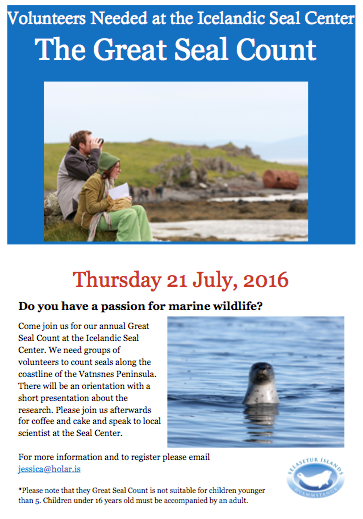The Seal Center’s Tourism Research Department was successful in obtaining the grant titled “Cooperation in the Field of Arctic Studies Between Iceland and Norway.” Monday, 29th November, was their first international meeting. This grant was awarded for preparatory support for the initiation of joint grant applications to fund future research projects. This is the first of many future efforts in working internationally with other tourism and marine biology experts. Jessica Faustini Aquino directs this research group.
Arctic Research Grant
The Seal Center’s Tourism Research Department was successful in obtaining the grant titled “Cooperation in the Field of Arctic Studies Between Iceland and Norway.” Monday, 29th November, was their first international meeting. This grant was awarded for preparatory support for the initiation of joint grant applications to fund future research projects. This is the first of many future efforts in working internationally with other tourism and marine biology experts. Jessica Faustini Aquino directs this research group.
Travel Agency

New Report
Sandra Granquist, head of the biology department at the Icelandic Seal Centre, recently published a new report alongside Erlingur Hauksson.
The report is called MANAGEMENT AND STATUS OF THE ICELANDIC HARBOUR SEAL POPULATION: CATCHES, POPULATION ASSESSMENTS AND CURRENT KNOWLEDGE and can be found here: http://www.veidimal.is/files/Skra_0075605.pdf
Volunteers Needed!



